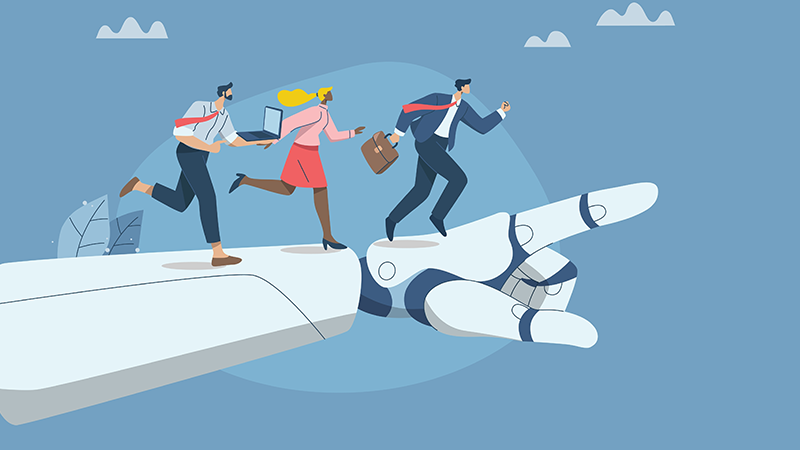
With constant media attention on how artificial intelligence (AI) innovation is accelerating at breakneck speed, it’s no wonder that people are so curious as to how everything will be automated five, 10 or 20 years in the future. But the current speed of AI innovation is slower than what scientists originally expected. Here’s a look at a few of the challenges impacting the industry.
The current shortage of AI engineers
It’s been estimated that there are only 300,000 AI engineers worldwide, which simply isn’t a large enough pool of people who truly understand the complex technologies behind AI. Right now, most people who are interested in learning AI are motivated on the user-end. But AI is becoming an increasingly hot topic in all industries, from finance and banking, to travel and hospitality and beyond. Hopefully, more aspiring scientists will join the field soon and make an impact.
The current shortage of AI training data
High-quality algorithms can only be created from high-quality data. But it’s difficult for companies to collect large amounts of clean, unbiased data that is representative of all possible scenarios. Crowdsourced data is one promising answer to this challenge, offering quality data at scale and a host of other benefits.
AI training data is used to build algorithms that perform specific tasks. Researchers use the training data over and over again to fine-tune the algorithm’s predictions and improve its success rate. To train the algorithms effectively, researchers need a large amount of data — but that’s only half of what is required. They also need high-quality data. AI researchers must confirm that the data is clean and organized before using it to train an algorithm. Duplicate, incorrect or irrelevant data can mess up an algorithm’s ability to recognize patterns, or create biased results. Even small errors, such as incorrectly tagging a word as a noun instead of verb can create a grave impact. Therefore, AI researchers must be careful and triple-check the AI training data quality before using it.
AI training data usually contains pairs of input information and corresponding labeled answers. In some fields, the input information will also have relevant tags to help the algorithm make accurate predictions. For example, in sentiment analysis, the AI training dataset usually includes input text with output labels of positive, negative or neutral. In image recognition, the input would be the image and the label would suggest what is depicted in that image (for example a table, a chair, etc.).
Why don’t we have enough AI training data?
Not all companies know how to get started with their machine learning projects. The AI hype is everywhere, and it seems like the world’s biggest tech companies are embracing it. If you’re managing a company that hasn’t implemented AI technology yet, you might feel pressured not to get left behind in the technological revolution, especially if you’ve heard that your competitors have taken their first steps. But where do you start, and what can AI do for your company?
It’s impressive to see that so many companies are interested in adopting new technology to improve their business, but AI isn’t a one-size-fits-all solution. You need to have a plan of how and why your company should implement AI technology. The first step is to define a specific need or problem that you’d like to solve using AI technology. Then, you can think about whether AI is the right solution. If it is, you can move on to researching about what kind of machine learning algorithm to use, such as classic or neural networks.
Companies underestimate the amount of data they need and the time it takes to collect it
Companies often decide at the last minute to implement machine learning, right after seeing that their competitor released a machine learning product. This leads to a stressful scramble to collect data, and sometimes it’s a lost cause. For example, you need to collect data for months to train a high-quality fraud detection algorithm. If you rush the process or build the algorithm with only a few weeks of data, then you’ll end up with a poor model that might fail in the real world.
Collecting and labeling datasets is a time-consuming task
Some machine learning algorithms, such as spiking neural networks, require specialized datasets that are often difficult and time-consuming to build. In addition, some tasks such as image labeling are also tedious and require a lot of manual labor. Small and mid-size companies might hesitate to invest in machine learning projects unless they are 100% confident that the implementation will pay off.
The few companies invested in data collection often refuse to share their datasets
Data hoarding usually stems from privacy concerns or fear of handing an advantage to their competitors. While it’s true that high-quality data is often what separates good algorithms from great ones, it’s important to also consider the need for an appropriate quantity of data. If a spirit of cooperation gives you access to clean, structured data that is relevant to your existing dataset, then it may be worth sharing what you have. After all, the more high-quality data you have, the better your algorithm will perform on edge cases and the greater your market advantage will be.
AI innovation requires big data, which calls humans to contribute and collect data. While large companies might have AI departments, small to midsize likely won’t. For those companies, it’s especially important to store data in a way that is simple and ready to use. If the companies store data in messy logs, their employees will struggle to work with it and need to perform extra pre-processing steps.
That’s where TELUS Digital comes in. We offer crowdsourcing tech services to accurately clean and tag your data so that it’s ready to use for your next machine learning investment. Whether you’re just starting with AI or you’re looking to take your existing AI initiatives to the next level, we have the experience to get you where you want to go and beyond. Connect with us today.



